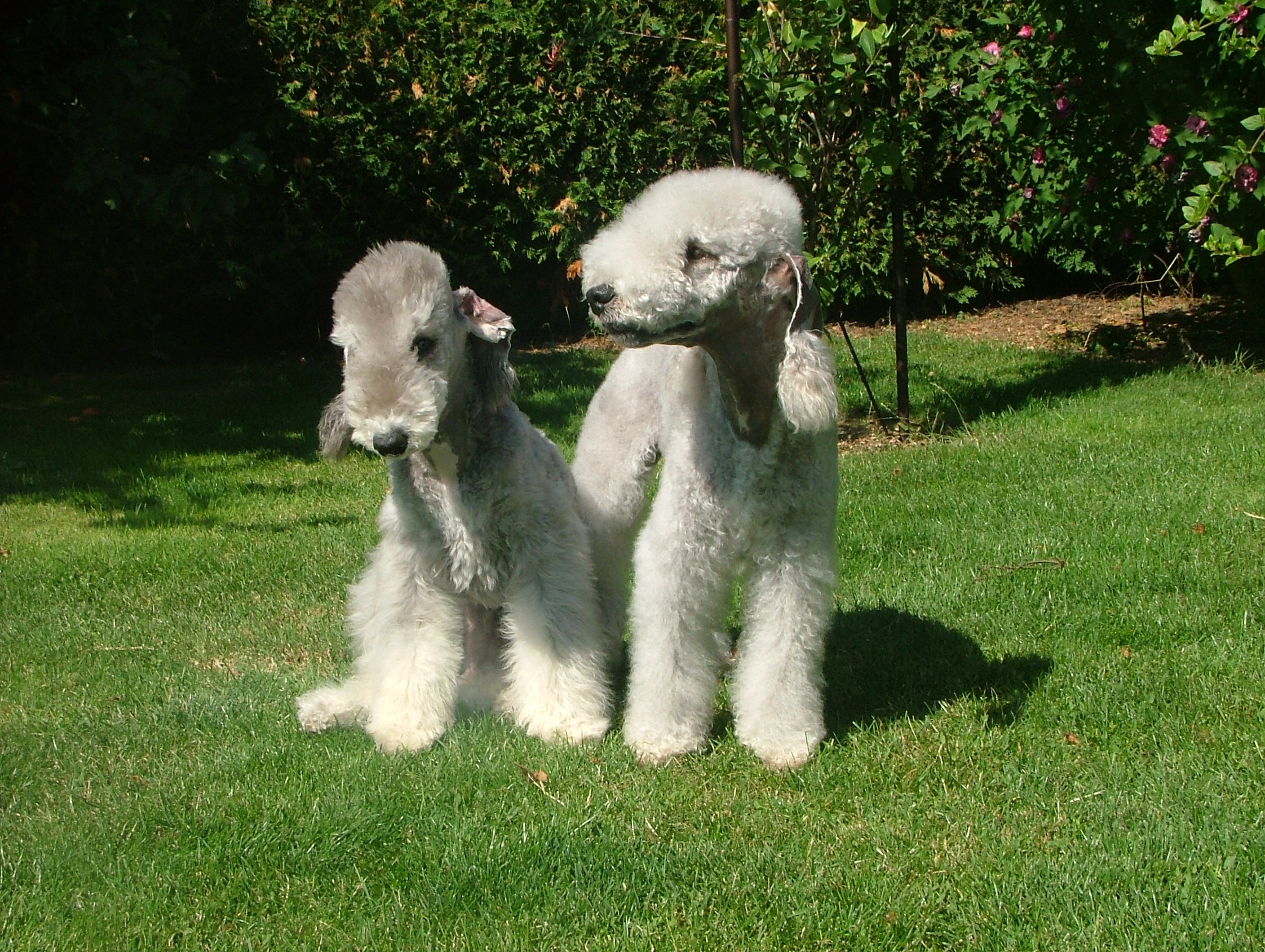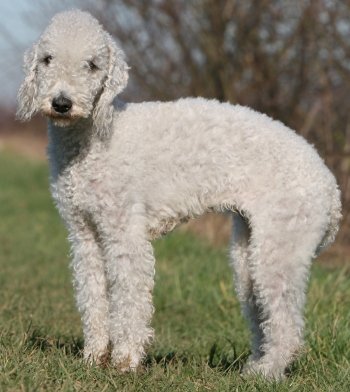Bedlington Terrier
- Group 3: Terrier
- Section 1 Large and medium sized Terriers
- Without working trial
Great Britain
Rothbury Terrier
About 41 cm (16 ins. ) In the females slight downward deviation, in males upwards allowed.
8-10 kg
The Bedlington Terrier is one of the FCI recognized British breed (FCI Group 3, Section 1, Standard No. 9).
Origin and History
The Bedlington Terrier, formerly known as the Rothbury Terrier, originated in the former mining regions of northern England, where it was used for hunting rabbits. In the first stud book of the Kennel Club of 1874 30 Bedlington Terrier are listed. The first breed association for the breed was founded in 1877 in England.
The race was dedicated to the hunt rats and was therefore often used in mining, for example. But above all traveled Bedlington Terrier with tinkers, knife-grinders and dealers across the country and liberated, while going about the owners of their work, the village of rats and other rodents. The British passion for betting abused this dog, like many other terrier breeds, for animal fighting; no accident that he is also called " wolf in sheep's clothing". The usual Schur resembles that of a sheep.
Description
The Bedlington Terrier is a dog of medium size ( about 41 cm, 8 to 10 kg). The coat is blue - gray ( then dark eyes and nose) or liver or sand color ( then light eyes and brown nose). The head should be pear-shaped with ears that are hanging down and fringed at the ends. Other standard items are the smooth neck and a flachrippiger wiry body and a low set tail, which tapers down. The tail should not be carried over the back. It is characterized by the dense slightly curly hair that protrudes from the skin and should not be wiry.
Diseases
Prone to eye diseases (in rare cases ) and Kupfertoxikose (excessive storage of copper in the liver). Through careful breeding and selection of breeding association Terrier Club and the FCI prescribed tests on Kupfertoxikose for dogs that are allowed or used for breeding (eg blood test, genetic testing DNA test), the Kupfertoxikose comes in this breed now rare. Since the Bedlington Terriers are so rare, with a Kupfertoxikose carrier dog (DNA 1:2 ) may also be grown further, if the mating of the other dog is not a carrier, ie Kupfertoxikose negative ( = free ) is (DNA 1:1 genetically healthy ).
In Finland, for example, the German blood DNA test is not accepted because it is too vague. Here, as in other countries, is carried out with the roots of Kupfertoxikose DNA test with two markers.







